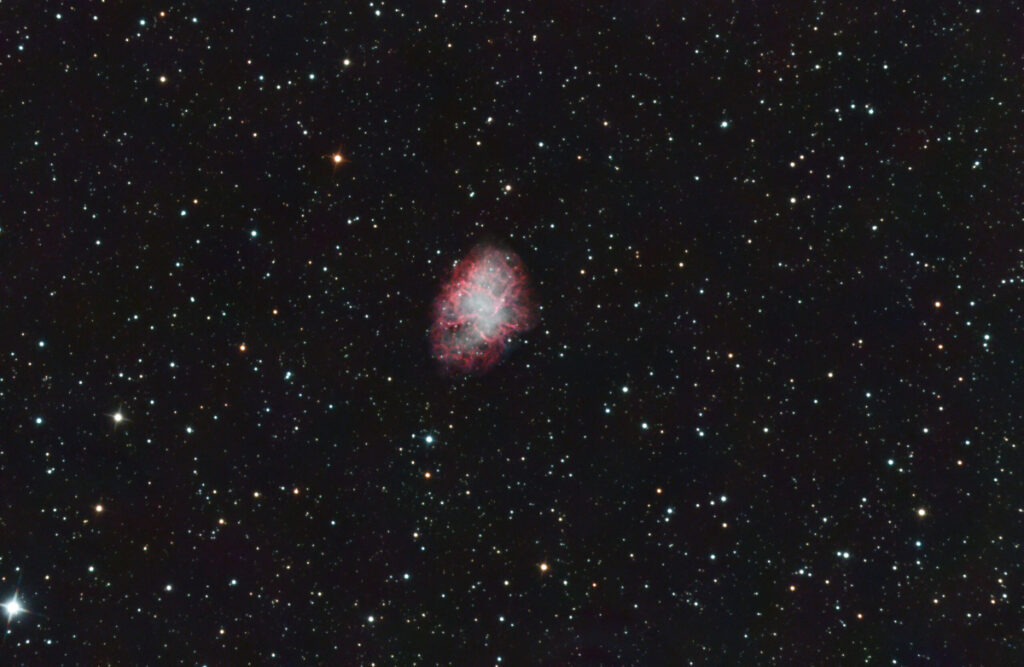


A nebula (Latin for ‘cloud, fog’; pl.: nebulae, nebulæ, or nebulas) is a distinct luminescent part of interstellar medium, which can consist of ionized, neutral, or molecular hydrogen and also cosmic dust. Nebulae are often star-forming regions, such as in the Pillars of Creation in the Eagle Nebula. In these regions, the formations of gas, dust, and other materials “clump” together to form denser regions, which attract further matter and eventually become dense enough to form stars. The remaining material is then thought to form planets and other planetary system objects.
Most nebulae are of vast size; some are hundreds of light-years in diameter. Although denser than the space surrounding them, most nebulae are far less dense than any vacuum created on Earth (105 to 107 molecules per cubic centimeter) – a nebular cloud the size of the Earth would have a total mass of only a few kilograms. Many nebulae are visible due to fluorescence caused by embedded hot stars, while others are so diffused that they can be detected only with long exposures and special filters. Some nebulae are variably illuminated by T Tauri variable stars.